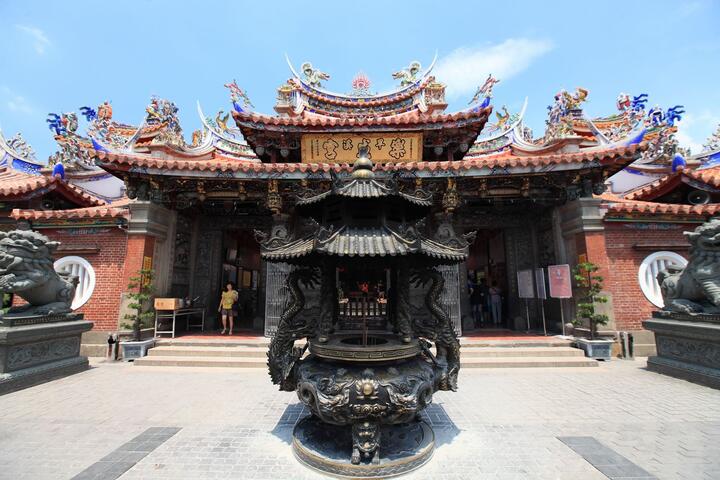Lecheng Temple Introduction
The historical origins of Taichung City's Hanjing Mazu Temple, known as "Lecheng Temple," trace back to the early years of the Qianlong period. The Lin ancestors came to Taiwan to cultivate land, hoping for smooth sailing and successful farming. They respectfully welcomed the "Old Second Mazu" gold statue from Meizhou Tianhou Temple to Taiwan. Upon passing the current site of this temple, they experienced divine signs, leading them to choose this sacred place to temporarily worship the deity. As time passed, they successfully cultivated the land, and motivated individuals decided to build "Lecheng Temple" at the current site in the 18th year of Qianlong (AD 1753) for the faithful to worship morning and evening. By the 10th year of the Taisho era (AD 1921), due to population growth and the formation of communities, in response to the increasing number of followers, the local leaders Bao Zheng Lin Yuanquan, Zhang Mei, and Lai Weiyao proposed the reconstruction of the temple's scale. They collaborated with devoted locals, including Lin Dafa, Gong Xianchai, Lai Weiyao, Lin Atang, Lin Tong, and Lin Jun, to promote the reconstruction project. The complex construction faced numerous challenges, and after several years of work, the main hall was completed in the 13th year of Taisho (AD 1924), with the San Chuan Hall finished in the 4th year of Showa (AD 1929). After expansion in the 80th year of the Republic of China, the grand and solemn structure of "Lecheng Temple" was finally completed. The establishment, repair, and expansion of "Lecheng Temple" resemble a local settlement history. According to the "Chronicles of Changhua County" in the 12th year of Daoguang (AD 1832), there were 21 Mazu temples in the county, including one at Hanjing Village, which confirms that "Lecheng Temple" was already a renowned Mazu temple in the county during the Daoguang period. Overview: Main Deity: Tian Shang Sheng Mu (Mazu) Subsidiary Deities: Guanyin Buddha Rear Hall: 1st Floor - Sheng Fu Mu, Xuantian Shangdi, Guan Sheng Dijun, Doumu Xingjun, and 60 Taisui Generals 2nd Floor - Yuhuang Shangdi, Guanyin Buddha, Zhusheng Niangniang, Wenchang Dijun, Five Route Wealth Gods, Yue Lao Xingjun, and Hua Tuo Xianshi Established Address: No. 48, Hanjing Street, Hanjing Village, East District, Taichung City Year Established: 18th year of Qianlong (AD 1753) Year of Reconstruction: Main Hall: 13th year of the Republic of China, Year of the Rat, AD 1924 Front Hall: 17th year of the Republic of China, Year of the Earth Dragon, AD 1928 Side Rooms: 80th year of the Republic of China, Year of the Sheep, AD 1991 Year of Expansion: Rear Hall: 80th year of the Republic of China, Year of the Sheep, AD 1991 Total Construction Area: 2,245.399 square meters











































